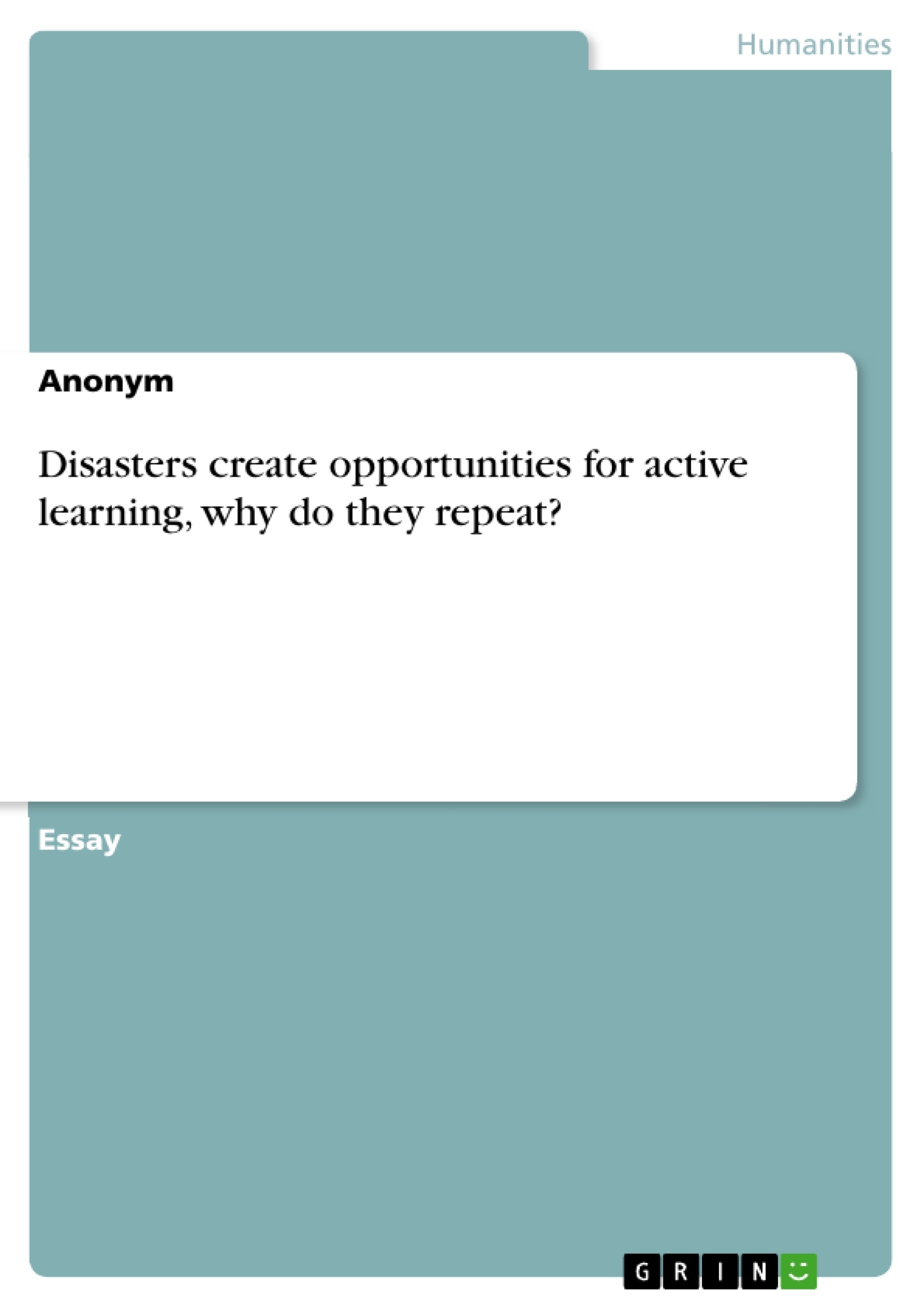Disasters have adversely affected humans since the dawn of their existence. If one looks at the past as a model for what may be expected in the future, it can be found that severe events, which wreaked havoc on human communities and inflicted high levels of mortality, were surprisingly frequent and widespread. Considering the recent past, the number of disasters increased threefold within the 1980’s in comparison to the 1960’s, and the economic loss increased by a factor of almost nine. From the 1980's to the 1990's the number of affected people rose from 147 million to 211 million a year. Recognizing the rise in number and effects of disasters, this essay discusses the potential for active learning that disasters create and the reasons why those repeat.
This essay begins by defining the key terms 'disaster' and ‘active learning’. To identify pathologies that affect the ways organizations learn from disasters, factors that determine the potential for active learning are then defined and discussed. These factors are integral parts of Toft and Reynolds’s “Steps to active foresight model” (2005: 67), which illustrates how they are interlinked. Toft and Reynolds’s model is then used as a framework to study two separate nuclear power plant disasters. These high profile events, which negatively affected the nuclear industry, are examined to identify, whether the potential for active learning was realized after the first event, and if yes, why an event displaying similar features yet again occurred. The findings deriving from the case studies are then summarized and the essay question is answered and concluded with, why disasters repeat despite they create opportunities for active learning. Before any analysis or conclusions can be made and in order to establish a research framework, key terminology and concepts need to be examined, beginning with the key term 'disaster'.
Inhaltsverzeichnis (Table of Contents)
- Introduction
- Defining Key Terms and Concepts
- Factors Affecting the Potential for Active Learning
- The 'Steps to Active Foresight Model'
- Case Studies
Zielsetzung und Themenschwerpunkte (Objectives and Key Themes)
This essay explores the potential for active learning created by disasters, investigating why such events tend to repeat despite this opportunity. It analyzes the factors that influence an organization's ability to learn from disasters and applies this framework to two case studies: the Three Mile Island and Fukushima Daiichi nuclear power plant disasters.
- The definition and nature of disasters
- Active learning and its relationship to disaster prevention
- The impact of organizational factors on learning from disasters
- The role of safety culture and safety philosophy in preventing disasters
- The importance of active foresight and its relationship to active learning
Zusammenfassung der Kapitel (Chapter Summaries)
The introduction presents the essay's central question: why do disasters repeat, even though they offer opportunities for active learning? It provides context by highlighting the increasing frequency and impact of disasters.
The first chapter defines key terms such as "disaster" and "active learning". It explores various organizational perspectives on disasters and argues for the adoption of a definition that acknowledges the potential for significant damage and loss.
The second chapter examines factors that influence an organization's ability to engage in active learning, specifically highlighting the importance of safety culture and safety philosophy. It introduces Toft and Reynolds's "Steps to Active Foresight Model" as a framework for understanding these factors.
Schlüsselwörter (Keywords)
This essay explores key concepts related to disaster management, active learning, safety culture, safety philosophy, active foresight, and organizational learning. It analyzes the causes and consequences of disasters, with a particular focus on the nuclear power industry.
- Quote paper
- Anonym (Author), 2012, Disasters create opportunities for active learning, why do they repeat?, Munich, GRIN Verlag, https://www.grin.com/document/293255



